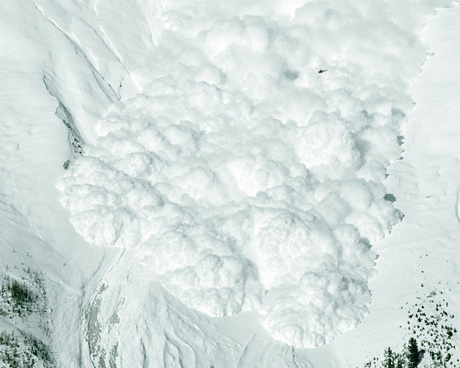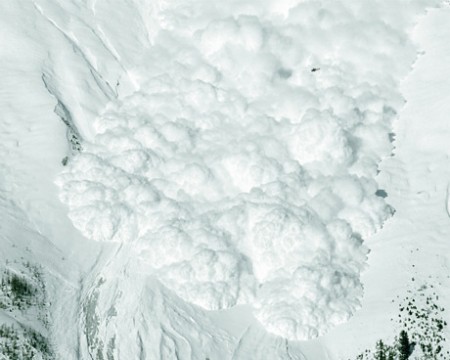16\12\2010
Written by Bieneke

BLEND 4 Yann Gross Lavina

In this issue of BLEND Magazine you’ll find a beautiful series of avalanches by photographer Yann Gross. We asked him how he did it and what fascinates him so much about this cold and terrifying phenomenon.
How did you come up with the idea to shoot avalanches? Why are you interested in this phenomenon?
‘I grew up in the mountains and used to and still ski and snowboard a lot since I was young. An avalanche is always a fear when you ride in the backcountry. I’ve been taken in a small avalanche once, it wasn’t very dangerous but I realized how powerless I was when the snow caught me.
I wanted to learn more about it, how to analyse the phenomenon and started to contact mountain guides and researchers who trigger the avalanches. In the end, the experiences live and the knowledge I get from them is almost more important than the photographic result. The process in the interesting part. I wasn’t interested in the documentary part of it, picturing the power and abstraction of the avalanche was my aim.’
What do you find the most remarkable/ strange about avalanches?
‘You never know what is going to happen. An old well known mountain guide told me one day: “I’ve been working in the mountains for 50 years, and yet don’t understand anything about avalanches.” Each situation is different and the snow structure is very complex. I’ve been on peak more than 30 times… every time it was supposed to be a risky day for avalanches, but even with dynamite… the avalanches did not come down very often.’
Have you ever shot any avalanches by natural cause? Accidentally?
‘No, it’s impossible. I never saw such big avalanches which are natural. Actually, the only people who see avalanches caused by natural cause are the ones who are caught in one, almost. And they are never as big as the one I shoot. My pictures needs to be spectacular and the avalanche big.
My photographic gear is heavy, and I have been working on the series for 6 years now and was only able to get seven pictures I was happy with. It’s a very long process: first I need a lot of snow, which means bad weather during a few days, then I need a good viewing point: a steep place without trees or rocks in the foreground. Sun is important because on a foggy day, the picture would be white. Moreover an avalanche only lasts a few seconds and you need to have your camera ready and know where it will come down.’
You shoot from a spot in front of the mountain that will be triggered, correct? Do you still experience the sounds and effects that are caused by the avalanches, or is it to far away?
‘There are two types of avalanches, the powder ones (after snowfalls) and the heavy ones (in spring). They are different, one is fast and made of powder, the other is slow and very heavy (the snow is melting). In this case the sound is strong when the snow layers break, but when it comes down it’s not that noisy.
I’m on the other side of the mountains, but sometimes when the avalanche was very powerful and fast, the clouds full of snow and the wind reached the other side of the mountains. It’s like a little storm that lasts a few seconds.’
Were you ever in danger during shooting?
‘Not really, the mountains guides are responsible for me and they don’t allow me to go where they think it’s unsafe. But sometimes, when it’s steep and trees are in the foreground, I need to use ropes and hang on these trees to have a unobstructed view.’
Can you tell me something about your future projects?
‘I had several accidents these last months, so I need to recover first. We’ve been working with skateboarders in Uganda for a few years now and will probably continue to do so for the next decade. For the rest, I’m going to live in the Swiss mountains during the winter and start my new researches from there.’
Check out more of Yann’s work here.
